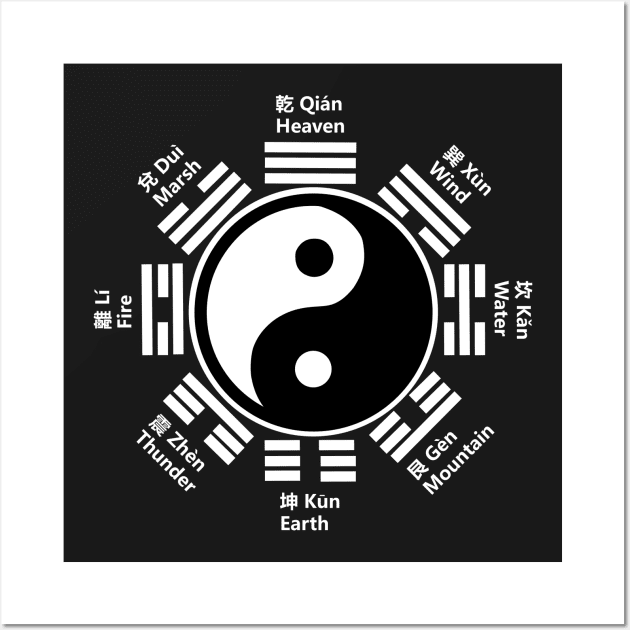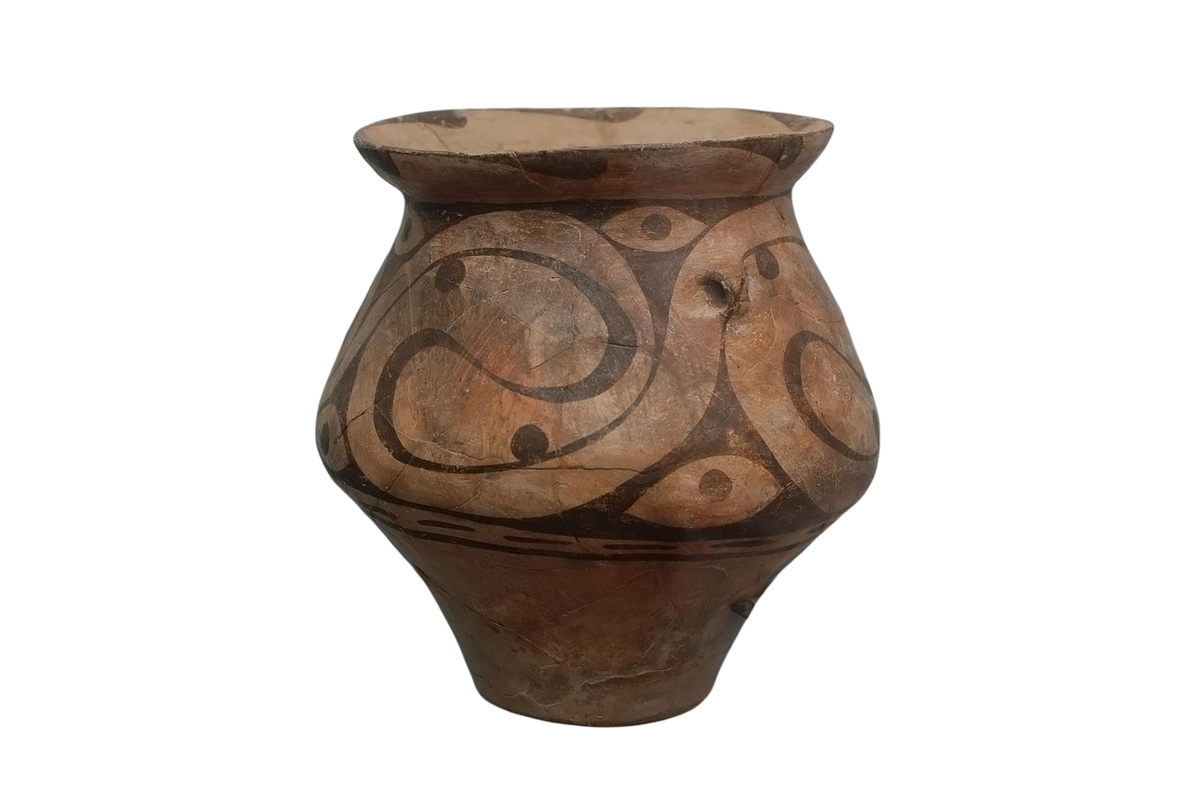The Queen Mother of the West, known by various local names, is a mother goddess in Chinese religion and mythology, also worshipped in neighbouring Asian countries, and attested from ancient times. From her name alone some of her most important characteristics are revealed: she is royal, female, and is associated with the west.[1]
The first historical information on her can be traced back to Shang dynasty oracle bone inscriptions that record sacrifices to a "Western Mother".[2] Even though these inscriptions illustrate that she predates organized Taoism, she is most often associated with Taoism. The growing popularity of the Queen Mother of the West, as well as the beliefs that she was the dispenser of prosperity, longevity, and eternal bliss, took place during Han dynasty, in the 2nd century BCE, when the northern and western parts of China were able to be better known because of the opening of the Silk Road.
The first mentions of the Queen Mother date back to the oracle bone inscriptions of the Shang dynasty (1766 – 1122 BCE).
One inscription reads:
Crack-making on day IX (9th day), we divined. If we make offering to the eastern mother and the western mother, there will be approval.
Western Mother refers to an archaic divinity residing in the west. The exact nature of the Mother divinities in the Shang dynasty is unclear, but they were seen as powerful forces deserving of ritual by the people of the Shang dynasty.
Originally, from the earliest known depictions of her in accounts like the Classic of Mountains and Seas during the Zhou dynasty, she was a ferocious goddess of death with the teeth of a tiger, who rules over wild beasts and sends down heavenly punishments such as pestilences. She was also mentioned as an authority ruling over other divinities such as Jiutian Xuannü, a goddess of war and sex.
Other stories hold that she is a mountain goddess or a divine tigress.[13] She is also popularly thought to have blessed the Eight Immortals with their supernatural abilities.[14]
Queen Mother of the West is a calque of Xiwangmu in Chinese sources, Seiōbo in Japan, Seowangmo in Korea, and Tây Vương Mẫu in Vietnam. She has numerous titles, one being Yaochi Jinmu (瑤池金母), the "Golden Mother of the Jade Pond (瑤池)" [5] (also translated "Turquoise Pond"[6][7]). She is also known in contemporary sources as the Lady Queen Mother.
In Chinese salvationist religions, she is believed to be the same being as their main deity, Wusheng Laomu (Chinese: 無生老母; lit. 'birthless old mother'), also known as Wujimu (無極母; lit. 'infinite mother').[8] The title, Wujimu, signifies the absolute principle of reality, or the creational origin of all things.[9]
Tang writers called her "Golden Mother the First Ruler", the "Golden Mother of Tortoise Mountain", "She of the Nine Numina and the Grand Marvel", and the "Perfected Marvel of the Western Florescence and Ultimate Worthy of the Cavernous Darkness". Commoners and poets of the era referred to her more simply as the "Queen Mother", the "Divine Mother", or simply "Nanny" (Amah).
The Queen Mother of the West is most often depicted holding court within her palace on the mythological Mount Kunlun, usually supposed to be in western China (a modern Mount Kunlun is named after this). Her palace is believed to be a perfect and complete paradise, where it was used as a meeting place for the deities and a cosmic pillar where communications between deities and humans were possible.[10] At her palace she was surrounded by a female retinue of prominent goddesses and spiritual attendants. One of her symbols is the Big Dipper.[11][12]

Although not definite there are many beliefs that her garden had a special orchard of longevity peaches which would ripen once every three thousand years,[10] others believe though that her court on Mount Kunlun was nearby to the orchard of the Peaches of Immortality. No matter where the peaches were located, the Queen Mother of the West is widely known for serving peaches to her guests, which would then make them immortal. She normally wears a distinctive headdress with the Peaches of Immortality suspended from it.
Flourishing parasols, we reach the chronograms' extremity;
Riding on the mist, I wander to Lofty Whirlwind Peak.
The Lady of the Supreme Primordial descends through jade interior doors;
The Queen Mother opens her Blue-gem Palace.
Celestial people—What a Crowd!
A lofty meeting inside the Cyan Audience Hall.
Arrayed Attendants perform Cloud Songs;
Realized intonations fill the Grand Empty Space.
Every thousand years, her purple crabapple ripens;
Every four kalpas, her numinous melon produces abundantly.
This music differs from that at the feast in the wilderness—
So convivial, and certainly infinite.
— Wu Yun (Complete Tang Poems 1967, line 4942)
The Tarim mummies are a series of mummies discovered in the Tarim Basin in present-day Xinjiang, China, which date from 1800 BCE to the first centuries BCE,[1][2][3] with a new group of individuals recently dated to between c. 2100 and 1700 BCE.[4][5] The Tarim population to which the earliest mummies belonged was agropastoral, and they lived circa 2000 BCE in what was formerly a freshwater environment, which has now become desertified.[6]
A genomic study published in 2021 found that these early mummies (dating from 2,135 to 1,623 BCE) had high levels of Ancient North Eurasian ancestry (ANE, about 72%), with smaller admixture from Ancient Northeast Asians (ANA, about 28%), but no detectable Western Steppe-related ancestry.[7][8] They formed a genetically isolated local population that "adopted neighbouring pastoralist and agriculturalist practices, which allowed them to settle and thrive along the shifting riverine oases of the Taklamakan Desert."[9] These mummified individuals were long suspected to have been "Proto-Tocharian-speaking pastoralists", ancestors of the Tocharians, but this has now been largely discredited by their absence of a genetic connection with Indo-European-speaking migrants, particularly the Afanasievo or BMAC cultures.

cucenti pottery, circa 4300–4000 BC
The Cucuteni–Trypillia culture, also known as the Cucuteni culture or the Trypillia culture, is a Neolithic–Chalcolithic archaeological culture (c. 5500 to 2750 BC) of Southeast Europe. It extended from the Carpathian Mountains to the Dniester and Dnieper regions, centered on modern-day Moldova and covering substantial parts of western Ukraine and northeastern Romania, encompassing an area of 350,000 km2 (140,000 sq mi), with a diameter of 500 km (300 mi; roughly from Kyiv in the northeast to Brașov in the southwest).[1][2]
The majority of Cucuteni–Trypillia settlements were of small size, high density (spaced 3 to 4 kilometres apart), concentrated mainly in the Siret, Prut and Dniester river valleys.[3] During its middle phase (c. 4000 to 3500 BC), populations belonging to the Cucuteni–Trypillia culture built the largest settlements in Neolithic Europe, some of which contained as many as three thousand structures and were possibly inhabited by 20,000 to 46,000 people

cucenti pottery, circa 4300–4000 BC
Most of the settlements were located close to rivers, with fewer settlements located on the plateaus. Most early dwellings took the form of pit-houses, though they were accompanied by an ever-increasing incidence of above-ground clay houses.[22] The floors and hearths of these structures were made of clay, and the walls of clay-plastered wood or reeds. Roofing was made of thatched straw or reeds.
The inhabitants were involved with animal husbandry, agriculture, fishing and gathering. Wheat, rye and peas were grown. Tools included ploughs made of antler, stone, bone and sharpened sticks. The harvest was collected with scythes made of flint-inlaid blades. The grain was milled into flour by quern-stones. Women were involved in pottery, textile- and garment-making, and played a leading role in community life. Men hunted, herded the livestock, made tools from flint, bone and stone.[citation needed] Of their livestock, cattle were the most important, with swine, sheep and goats playing lesser roles. The question of whether or not the horse was domesticated during this time of the Cucuteni–Trypillia culture is disputed among historians; horse remains have been found in some of their settlements, but it is unclear whether these remains were from wild horses or domesticated ones.
Clay statues of females and amulets have been found dating to this period. Copper items, primarily bracelets, rings and hooks, are occasionally found as well. A hoard of a large number of copper items was discovered in the village of Cărbuna, Moldova, consisting primarily of items of jewelry, which were dated back to the beginning of the fifth millennium BC. Some historians have used this evidence to support the theory that a social stratification was present in early Cucuteni culture, but this is disputed by others.[7]
Pottery remains from this early period are very rarely discovered; the remains that have been found indicate that the ceramics were used after being fired in a kiln. The outer colour of the pottery is a smoky grey, with raised and sunken relief decorations. Toward the end of this early Cucuteni–Trypillia period, the pottery begins to be painted before firing. The white-painting technique found on some of the pottery from this period was imported from the earlier and contemporary (5th millennium) Gumelnița–Karanovo culture. Historians point to this transition to kiln-fired, white-painted pottery as the turning point for when the Pre-Cucuteni culture ended and Cucuteni Phase (or Cucuteni–Trypillia culture) began.[7]
Cucuteni and the neighbouring Gumelnița–Karanovo cultures seem to be largely contemporary; the "Cucuteni A phase seems to be very long (4600–4050) and covers the entire evolution of the Gumelnița–Karanovo A1, A2, B2 phases (maybe 4650–4050)."[23]